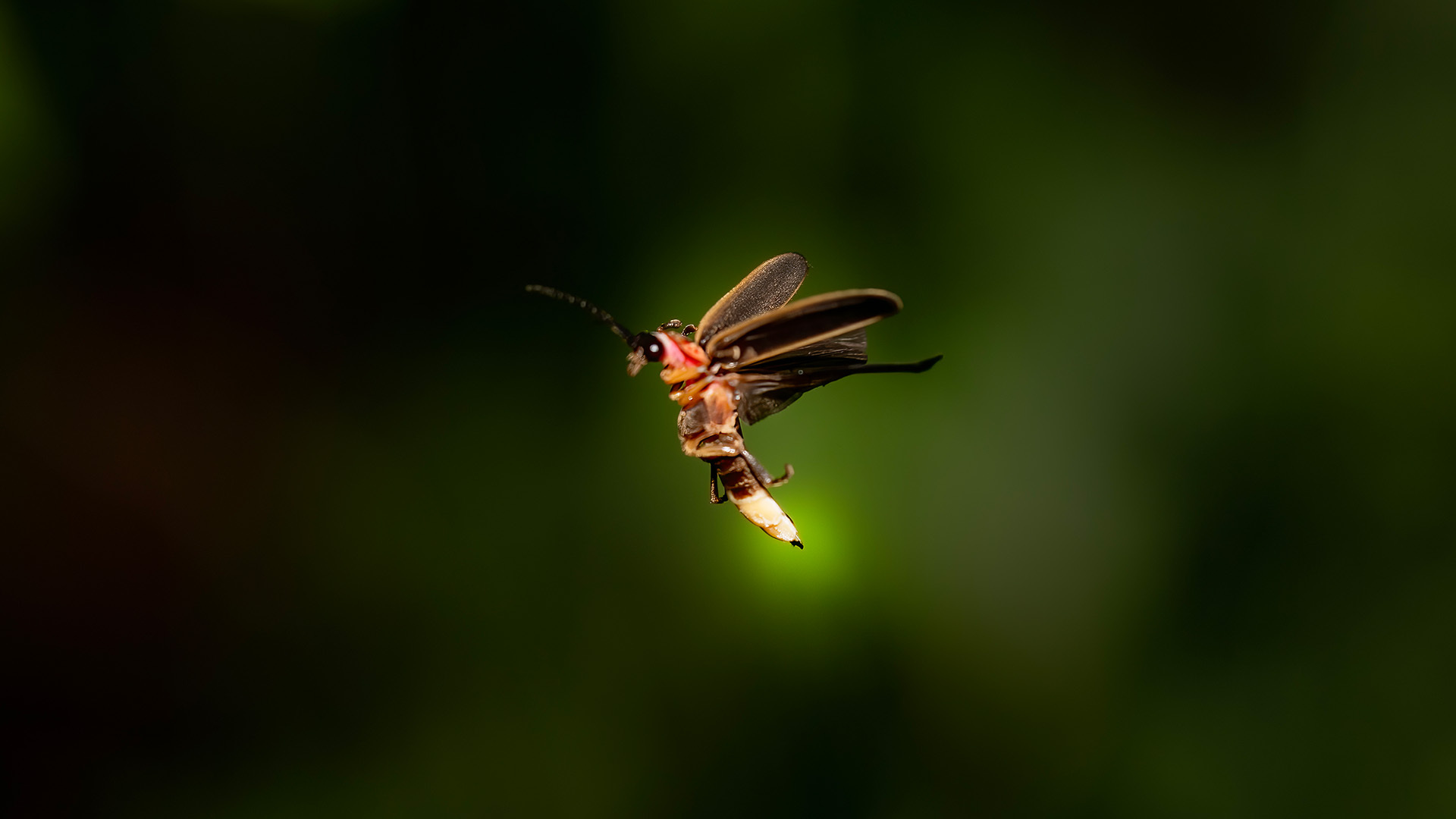
[LAUREN TAYLOR]
WHETHER YOU CALL THEM FIREFLIES OR LIGHTNING BUGS – THE AIRBORNE BEETLES – *NOT* FLIES – ARE SYNONYMOUS WITH SUMMER… BUT IF YOU’VE NOTICED FEWER AND FEWER OF THEM LIGHTING UP THE NIGHT – YOU’RE NOT ALONE.
RESEARCHERS SAY CLIMATE CHANGE IS THREATENING THE BIOLUMINESCENT BUGS… BUT NOT NECESSARILY IMPACTING THE POPULATION YET.
RIGHT NOW, THERE’S ONLY ANECDOTAL EVIDENCE TO BACK REPORTS THEIR POPULATION IS ON THE DECLINE… AND WHILE 40 PERCENT OF THE WORLD’S SPECIES OF INSECTS ARE FACING EXTINCTION – NO ONE KNOWS FOR SURE EXACTLY HOW THAT’S IMPACTING THE FIREFLY POPULATION.
THAT’S BECAUSE THERE’S NO PRE-EXISTING DATA ON FIREFLY POPULATIONS… SO WHILE A LOT OF SPECIES’ NUMBERS MAY SEEM LOW – THERE’S NO WAY TO KNOW IF THAT MEANS THEY’RE ENDANGERED.
ACCORDING TO THE INTERNATIONAL UNION FOR CONSERVATION OF NATURE’S RED LIST OF THREATENED SPECIES – ONE IN THREE NORTH AMERICAN FIREFLIES MAY BE AT RISK OF EXTINCTION… BUT THAT NUMBER MAY BE MUCH HIGHER, SINCE NEARLY HALF OF THE ASSESSED SPECIES ARE WHAT RESEARCHERS CALL “DATA DEFICIENT”.
OTHER FACTORS MANY FIREFLY ENTHUSIASTS AND EXPERTS SAY LIKELY PLAY A ROLE IN THE APPARENT POPULATION DECLINE ARE DEVELOPMENT
AND LIGHT POLLUTION.
BUT AGAIN – THAT’S NOT KNOWN FOR SURE.
HOWEVER, A NEW STUDY *DID* FIND IT’S NOT JUST CLIMATE CHANGE THAT IMPACTS THE LIGHTNING BUG POPULATION… IT’S OTHER ENVIRONMENTAL FACTORS – LIKE SHORT-TERM WEATHER PATTERNS – THINK CHANGES IN RAIN PATTERNS CAUSING ABNORMALLY DRY OR ABNORMALLY WET CONDITIONS.
RESEARCHERS USED ADVANCED ARTIFICIAL INTELLIGENCE TO ANALYZE MORE THAN 24-THOUSAND SURVEYS THROUGH THE CITIZEN SCIENCE INITIATIVE “FIREFLY WATCH” TO FIGURE THAT OUT.
THE RESEARCHERS SAY THEIR STUDY IS THE FIRST COMPREHENSIVE ATTEMPT TO APPLY A DATA-DRIVEN APPROACH TO UNDERSTANDING FIREFLY POPULATION DYNAMICS – BUT MORE RESEARCH IS NEEDED.
HOWEVER, AS ONE VIRGINIA TECH ENTOMOLOGIST PUT IT – STUDYING FIREFLIES IS “NOT WHERE THE MONEY IS.”
FIREFLY WATCH – NOW CALLED THE FIREFLY ATLAS – IS A GROUP OF RESEARCHERS LOOKING TO COLLECT MORE ANECDOTAL DATA IN HOPES OF GETTING A BETTER IDEA OF WHAT’S GOING ON… AND POSSIBLY LAUNCH MORE IN-DEPTH STUDIES.











